Welcome to Pet Rescue By Judy!
401 South Laurel Avenue
Sanford, FL 32771
(407) 302-4497
info@petrescuebyjudy.com
Groucho the Pug Mix's Web Page
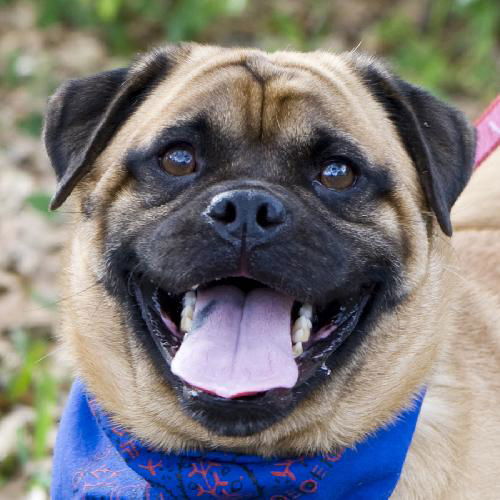
| My Rescue |
| Login to Remember your Favorite Animals and Breeds! |
Groucho the Pug Mix needs a caretaker or foster!
Won't you consider helping him get a new start?
Won't you consider helping him get a new start?
Name: Groucho the Pug Mix
Adoption Fee: $275
Species: Dog
Breed: Pug (short coat)
Learn more about the Pug.Color: Tan with Black
Sex: Male (neutered)
Current Size: 30 Pounds
General Potential Size: Small
Current Age: 17 Years 1 Month (best estimate)
Activity Level: Highly Active
Indoor or Outdoor: Indoor Only
Good with Dogs: Yes
Good with Cats: No
Good with Kids: No
Microchipped: Yes
Description:
Groucho came to us from another rescue that is being forced to downsize. He is a Pug mix, about 2 1/2 years old, and about 35lbs. He is almost twice the size of a standard Pug and has long legs. He is a friendly boy who likes to go for walks. He is a dominant dog, and prefers women but will warm up to a man after a day or so. He isn't super friendly with strangers, he loves his own people and just wants to be with them. He is funny and goofy and needs a forever home with someone that will be his pack leader. He will do best in a home with no cats or kids, and he gets along with some other dogs.
FOSTER UPDATE: 1/26/2010 Groucho is doing very well in the house. He does awesome in his crate and never whins or complains. He loves playing in the back yard and is very interested in squirells he will sit and watch them for hours. Groucho is cautious with people at first put once you pet him he will not let you stop, he loves affection. He shows some signs of food gaurding so I opt to feed him in his crate. He gets along well with my older large dog but sometimes he gets a little bit hyper and tries to play fight. He loves to run and go on walks :)
According to www.dogbreedinfo.com, one of the older breeds, the Pug is believed to have originated before 400 BC in Asia. There is somewhat of a debate over the origin of the Pug. Some experts think it came from the Lowlands, brought back from the Far East by Dutch traders. It is possibly of Oriental stock, descended from a short-haired Pekingese, but another theory is, it is the result of crossing a small Bulldog. Yet another school of thought is that it is a miniature form of the rare French Mastiff called Dogue de Bordeaux. Pugs were a favorite of the artist Hogarth, who included his pet Pug "Trump" in several of his works. From the sixteenth century, it became a fashionable adornment of the European Courts, reaching its peak of popularity in Victorian times. He was a pet at Tibetan monasteries and later traveled to Japan. The Pug then came to Europe, where the endearing little dog was the pet of royalty in several countries and even became the official dog of the House of Orange in Holland. A Pug saved William, Prince of Orange's life by alerting him to the approaching Spaniards in 1572 at Hermingny. Napoleon's wife, Josephine, sent secret messages to her husband under the collar of her Pug while she was in prison. When the British overran the Chinese Imperial Palace in 1860, they discovered several Pugs and Pekinese, and brought the little dogs back to England with them. A Pug is "a lot of dog in a small space." They are perky, rambunctious and loyal, affectionate and loving, with a happy disposition. They are playful and charming. Clever and mischievous - with a heart-winning personality. They can be a bit willful. Highly intelligent, it bores easily with repetitive training practices. Pugs are sensitive to the tone of your voice, so harsh punishment is unnecessary. The dog is neither excitable nor dull. They are good watchdogs, very devoted and are not yappers. Pugs get along well with other dogs and pets, and they behave impeccably with both children and visitors. Do not forget though, that they require lots of attention and become jealous if their owner ignores them. They have an life expectancy of 12-15 years. A supporter of Pet Rescue By Judy e-mailed us this little Pug tidbit: " I learned additional knowlege about Pugs after a trip to my husband's homeland of Russia. I found that one of the greatest rulers of all time, Catherine the Great, had Pugs. In addition, she constructed a fountain in the royal home of St. Petersberg, home of Peter the Great, where a Pug travelled through a fountain catching ducks. I sat next to the fountain and had my picture taken."
Other Pictures of Groucho the Pug Mix (click to see larger version):
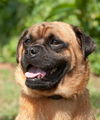 51.6k |
 36k |
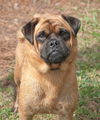 50.9k |
 34.2k |
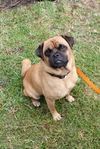 108.3k |
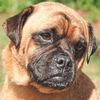 53k |
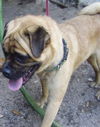 80.5k |
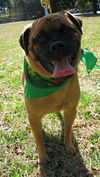 67k |
 142.6k |
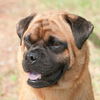 36.1k |
 46.1k |
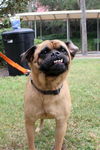 64.4k |
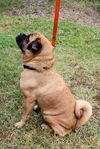 110.6k |
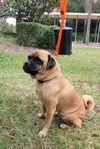 96.6k |
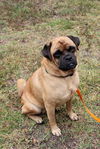 105.9k |
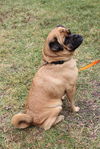 106.1k |
 31.7k |
 31.5k |
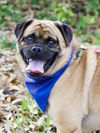 56.2k |
 58.7k |
Copyright © Pet Rescue by Judy





